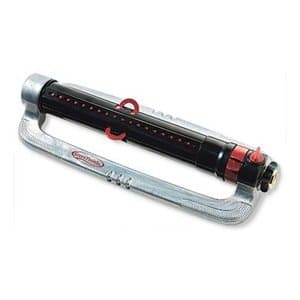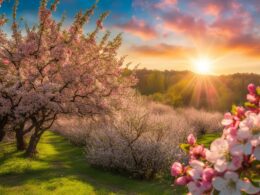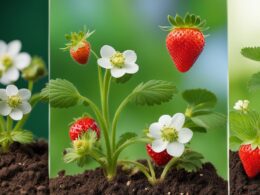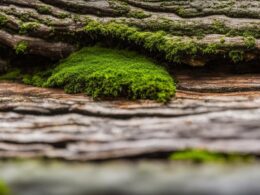Maintaining a traditional lawn can be a time-consuming and resource-intensive task. The constant need for mowing, watering, fertilizing, and herbicide use can become overwhelming. Plus, the emissions from gas-powered lawn mowers contribute to air pollution and environmental degradation.
But what if there was a way to have a beautiful, lush lawn without all the hassle? Introducing low-maintenance lawns with grass that doesn’t need to be mowed. These alternatives to traditional grass offer a sustainable and eco-friendly solution, saving you time and reducing your environmental impact.
In this article, we’ll explore different types of grasses and ground covers that require little to no mowing, allowing you to enjoy your lawn without the constant upkeep. From hard fescue and buffalograss to clover and moss, there are a variety of options to suit different climates and preferences. And the best part? These low-maintenance alternatives are not only easy to care for but also promote biodiversity and create a natural habitat for pollinators.
So, say goodbye to the days of spending hours pushing a lawn mower and hello to a beautiful, low-maintenance lawn that enhances the beauty of your home while minimizing your impact on the environment. Let’s dive in and discover the grass alternatives that will transform your lawn into a stress-free oasis.
Hard Fescue and Fescue Mixes: No-Mow Cool-Season Grass
When it comes to low-maintenance grass alternatives, hard fescue and fescue mixes are excellent choices for a no-mow lawn. These cool-season grasses require minimal upkeep and provide a beautiful, eco-friendly landscape without the constant need for mowing.
Hard fescue and fescue mixes are known for their hardiness and ability to naturally crowd out weeds, reducing the need for fertilizers and herbicides. Unlike traditional lawns, these grasses only need to be mowed once or twice a year, giving you more time to enjoy your outdoor space.
Varieties such as hard fescue, sheep fescue, and creeping red fescue are particularly well-suited for areas that experience dry spells or have shady conditions. These drought-tolerant grasses can thrive in challenging environments, providing a lush and green landscape with minimal effort.
Hard fescue and fescue mixes are ideal for regions in USDA hardiness zones 4-9, and they prefer full sun to moderate shade. By choosing these no-mow grass alternatives, you can create a low-maintenance lawn that is not only visually appealing but also environmentally friendly.
Buffalograss: Low-Mow Warm-Season Grass
If you’re looking for a low-maintenance grass option that thrives in warmer climates, buffalograss is an excellent choice. This warm-season turfgrass, native to the Great Plains, is well-adapted to full sun and can withstand heat and drought conditions, making it perfect for xeriscaping lawns.
Buffalograss typically grows to a height of 4 to 6 inches, creating a lush carpet-like appearance for your lawn. The best part? It only requires an annual spring mowing to remove old growth, significantly reducing the amount of time and effort needed for maintenance. The UC Verde variety of buffalograss can even go longer periods without mowing, adding to its low-mow appeal.
Whether you reside in plains and prairie states, southern states, or even California, buffalograss is a great option to consider for your low-maintenance lawn. With its ability to thrive in full sun and its minimal mowing needs, buffalograss offers a practical and attractive solution for homeowners seeking a stress-free lawn.
**Related Article**: [Learn more about xeriscaping and its benefits](https://www.example.com/xeriscaping-benefits)
Zoysia Tenuifolia: Slow-Growing, No-Mow Grass
If you’re looking for a low-maintenance grass that doesn’t require constant mowing, Zoysia tenuifolia, also known as no-mow Zoysia or temple grass, is an excellent choice. This hardy warm-season grass is known for its slow growth, making it exceptionally easy to maintain compared to other grass varieties.
No-mow Zoysia forms soft green mounds on your lawn, creating a lush and natural look. It’s particularly suitable for southern and transition zone states, where it can tolerate various weather conditions, from full sun to partial shade. Whether you have a busy schedule or simply prefer a low-maintenance lawn, Zoysia tenuifolia is a great option to consider.
With no-mow Zoysia, you’ll only need to mow your lawn twice a year, significantly reducing the time and effort required to keep your grass looking great. This slow-growing grass is also highly tolerant of drought and can handle high foot traffic, making it a practical and durable choice for your outdoor space.
In addition to its low-maintenance qualities, Zoysia tenuifolia offers various environmental benefits. Its deep root system helps prevent soil erosion, and its drought tolerance reduces the need for excessive watering. By choosing no-mow Zoysia for your lawn, you’re not only saving time and effort but also contributing to a more sustainable and eco-friendly landscape.
Clover: A Weed-Friendly Alternative
In search of a low-maintenance ground cover for your lawn that also attracts pollinators? Look no further than clover! In the past, clover was a popular choice for lawns due to its versatility and minimal upkeep. Unlike traditional grass lawns, clover requires little mowing and helps reduce the need for herbicides and fertilizers.
One of the benefits of clover is its ability to prevent weeds. The dense growth of clover plants crowds out unwanted weeds, eliminating the need for constant weeding and herbicide use. On top of that, clover’s deep root system helps control erosion, making it a great choice for areas prone to soil erosion.
Aside from being low-maintenance and weed-friendly, clover also offers an aesthetic appeal with its beautiful white flowers. These flowers not only add visual interest to your lawn but also attract beneficial insects such as bees and butterflies, supporting local pollinators.
There are several varieties of clover to choose from, depending on your region and sunlight conditions. White Dutch clover, microclover, strawberry clover, and red clover are all popular options that thrive in different environments. Whether your lawn receives full sun or partial shade, there is a clover variety that will flourish in your yard.
To establish clover in your lawn, it is best to plant it in early spring. This allows the clover to establish its roots before the heat of summer. Once established, clover will provide a lush and low-maintenance alternative to traditional grass lawns, with the added benefit of supporting pollinators.
Benefits of Clover as a Ground Cover:
- Low-maintenance and requires little mowing
- Reduces the need for herbicides and fertilizers
- Prevents weeds by crowding them out
- Controls erosion with its deep root system
- Attracts beneficial insects with its white flowers
Kurapia: A Drought-Tolerant Lawn Replacement
Looking for a low-maintenance grass alternative that can withstand dry conditions?
Consider Kurapia, a popular lawn replacement option hailing from Japan and renowned for its drought tolerance. Unlike traditional grass, Kurapia requires minimal upkeep, making it an excellent choice for those seeking a beautiful lawn without the constant need for mowing.
When it comes to height, Kurapia grows to a manageable 2 to 3 inches, creating a neat and well-kept appearance. This means you can say goodbye to your lawnmower and hello to more leisure time.
One of the great advantages of Kurapia is its ability to stay green year-round in temperatures above 45 degrees Fahrenheit. However, it’s important to note that it may not survive in regions where temperatures drop below 20 degrees Fahrenheit.
For optimal growth, Kurapia thrives in regions classified as USDA hardiness zones 7b and higher. Additionally, it requires full sun to partial shade, making it versatile for various lighting conditions.
To give you a visual idea of what Kurapia looks like, take a look at the image below:
With its ability to withstand drought and its low-maintenance nature, Kurapia is an ideal choice for those seeking a beautiful and vibrant lawn without the hassle. Say goodbye to frequent mowing and hello to a lush and appealing drought-tolerant lawn.
Moss: Creating a Forest Floor Lawn
If you have damp and shaded areas in your garden where traditional grass lawns struggle to thrive, moss can be an excellent low-maintenance ground cover option. Unlike grass, moss doesn’t require mowing, herbicides, or fertilizers, making it an eco-friendly choice for your lawn. It also plays a crucial role in preventing erosion and has a soft texture that resembles the forest floor, adding a touch of natural beauty to your outdoor space.
When choosing moss for your lawn, you can select from different varieties to suit your climate and moisture conditions. Two main types of moss are acrocarps and pleurocarps, each with its unique characteristics and growth habits. By understanding the specific needs of these moss varieties, you can create a lush and vibrant forest floor lawn.
Moss is well-suited for regions across the United States and thrives in partially shaded areas. It can transform your garden into a tranquil and serene space, creating a soothing atmosphere in shaded corners. Whether you want to cover a small patch of ground or transform your entire lawn, moss provides an attractive and low-maintenance alternative to traditional grass.
>Can Low-Maintenance Lawns Handle High Foot Traffic?
Low-maintenance lawns can indeed handle high foot traffic with the right high traffic grass solutions. There are specific grass types designed to withstand heavy use without requiring excessive care. By choosing the appropriate variety, you can enjoy both a low-maintenance lawn and a durable surface for heavy foot traffic.
Conclusion
Embrace the beauty and benefits of low-maintenance lawns with grass alternatives that don’t require frequent mowing. By choosing environmentally friendly landscaping options, you can not only save time but also reduce pollution and create a sustainable outdoor space.
From hard fescue and buffalograss to clover and moss, there are a variety of grass alternatives available to suit different climates and preferences. Consider the specific growing conditions and maintenance requirements of each option before making a decision.
By opting for a low-maintenance grass alternative, you can enjoy a beautiful and lush lawn while minimizing the effort and resources required for upkeep. Whether you choose a no-mow grass variety or a pollinator-friendly ground cover, these alternatives offer a visually appealing and eco-friendly solution for your landscaping needs.











